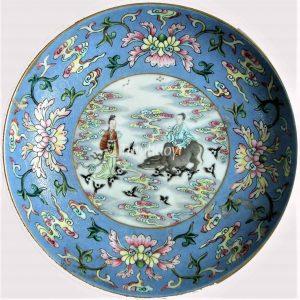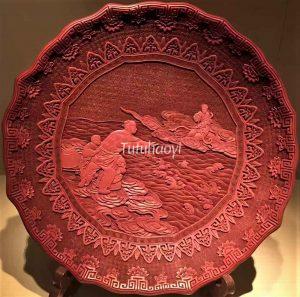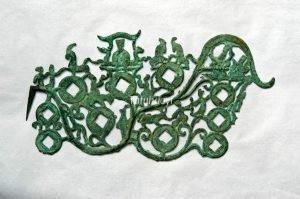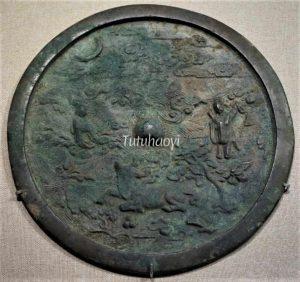The Weaving Maiden and the Herd Boy
牛郎织女
© Tutuhaoyi.com owns the copyright of the description content for the images attached. Quoting all or part of the description content on this page is permitted ONLY IF ‘Tutuhaoyi.com’ is clearly acknowledged anywhere your quote is produced unless stated otherwise. (本页描述内容版权归Tutuhaoyi.com所有,转发或引用需注明 “Tutuhaoyi.com”, 侵权必究, 已注开源信息的条目除外。)
The seventh day of the seventh month of the traditional Chinese year is the Chinese ‘Valentine’s Day’, Qixi Festival (七夕节). The custom can be traced back to an ancient story about a weaver girl and a cowherd:
Once upon a time, one of the daughters of the Lord of the Heaven lived on the east side of the Milky Way and she worked by the loom day in and day out, weaving fabrics as light as cloud for fairies, thus known as the ‘Weaving Maiden (织女 zhi nv)’. Later, her father allowed her to be married to the ‘Herd Boy (牛郎 niu lang)’ living across the Milky Way. But her father got angry with her because he thought she neglected her weaving duty after the marriage and summoned her back to the east side of the Milky Way, allowing her to reunite with her husband only once a year on the seventh day of the seventh month of the traditional Chinese year. In order to help the maiden to reach the other side of the Milky Way, flocks of magpies would have an annual gathering on that day to form a bridge.
In the heart of the Chinese people, the story of the Weaving Maiden and Herd Boy has epitomised as a symbol for lovers separated by various kinds of obstacles and their longing of reunion.
More discussion on this topic is available in Dr Yibin Ni’s blog here.
Fig 1: porcelain vase, Kangxi period (1662–1722), Qing dynasty, courtesy of the Jie Rui Tang Collection
Fig 2: famille rose porcelain dish, Qianlong period (1736–95), Qing dynasty, courtesy of Beijing Art Museum
Fig 3: cinnabar lacquer plate, Qing dynasty (1644–1911) courtesy of Nanjing Municipal Museum, China
Fig 4: porcelain bowl, Daoguang period (1821–50), Qing dynasty, courtesy of Palace Museum, Beijing
Fig 5-6: bronze funerary cash-coin tree (detail), Eastern Han period (2nd century), courtesy of Sichuan Museum, China
Fig 7: bronze mirror, Song dynasty (960–1279), courtesy of Nanjing Municipal Museum, China







Join the Conversation
I like the helpful information you provide in your articles.
I’ll bookmark your blog and check again here frequently.
I’m quite sure I’ll learn lots of new stuff right here!
Good luck for the next!